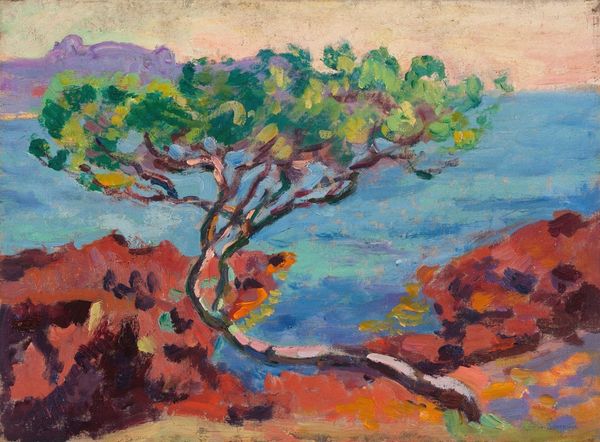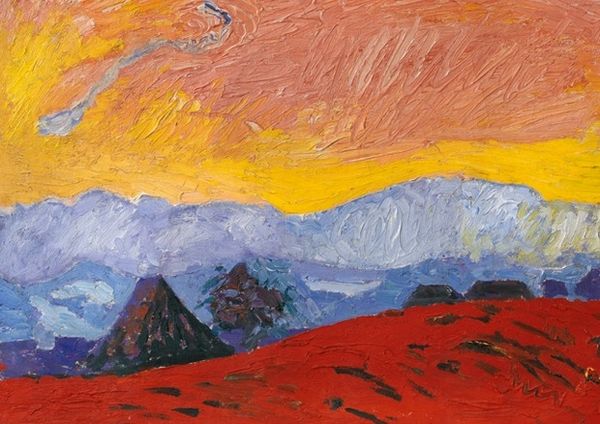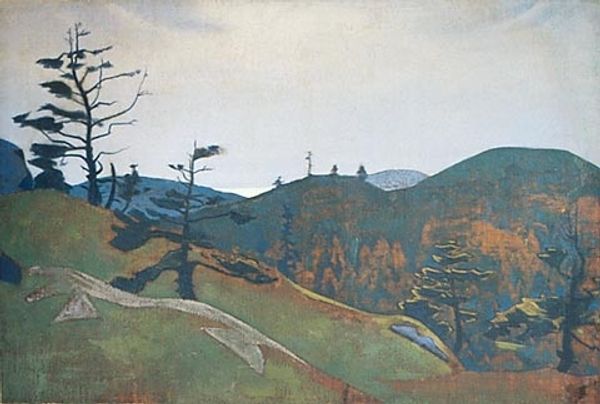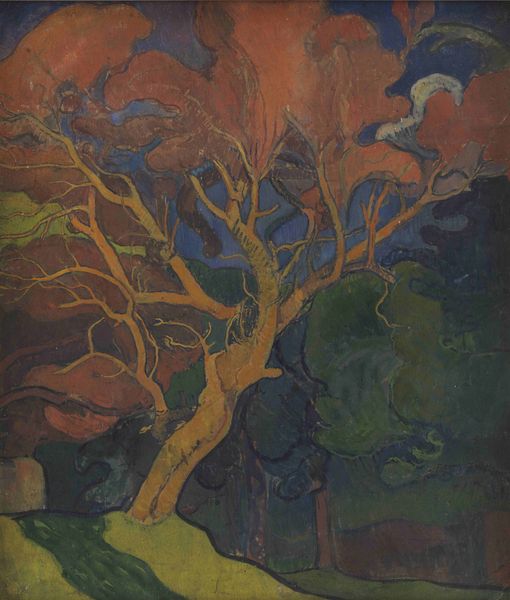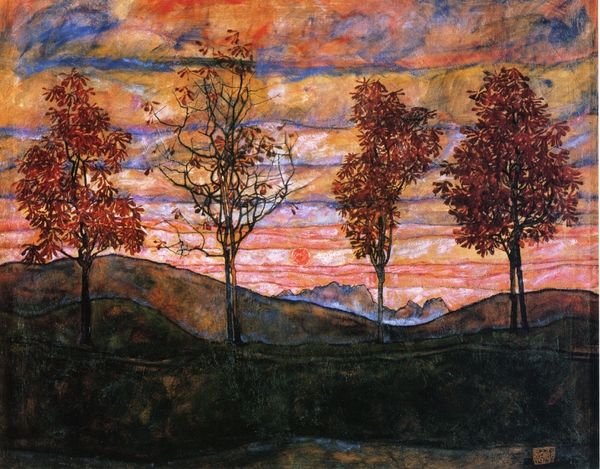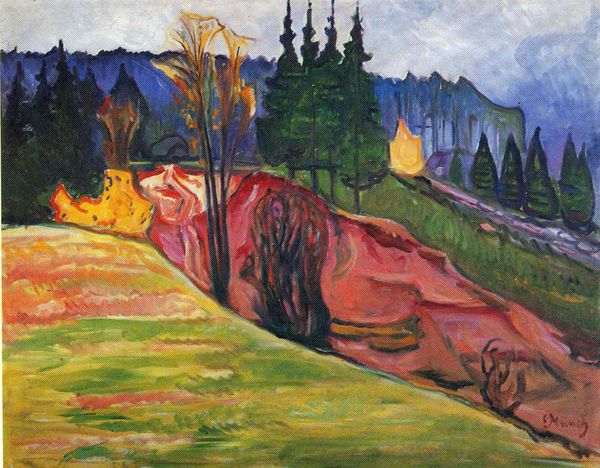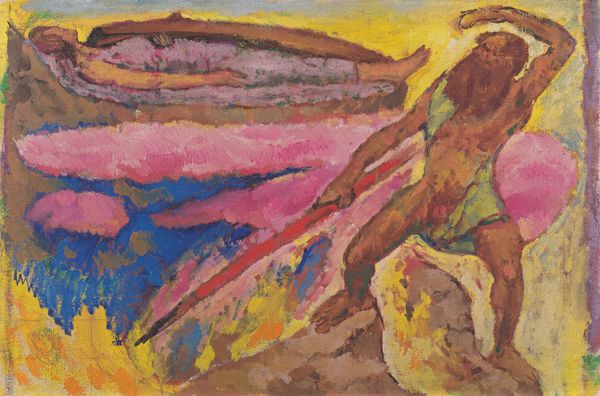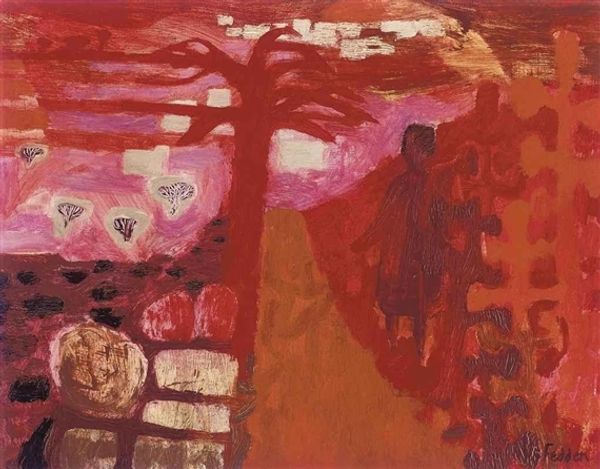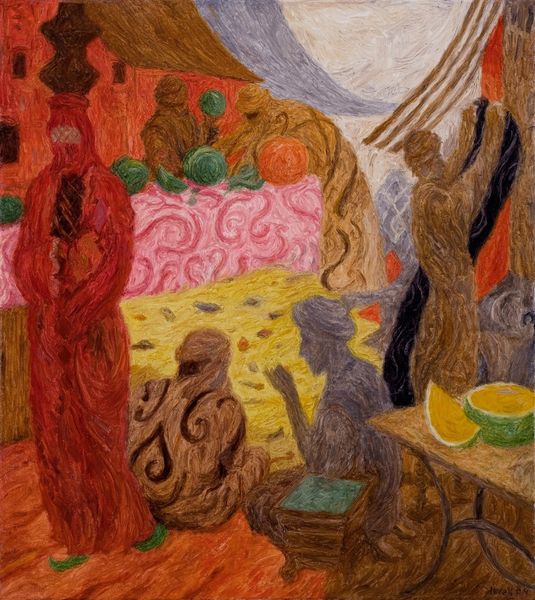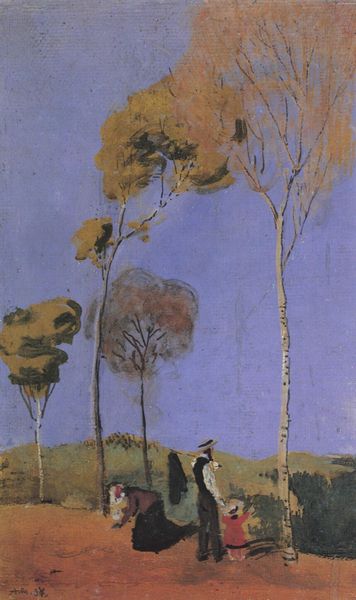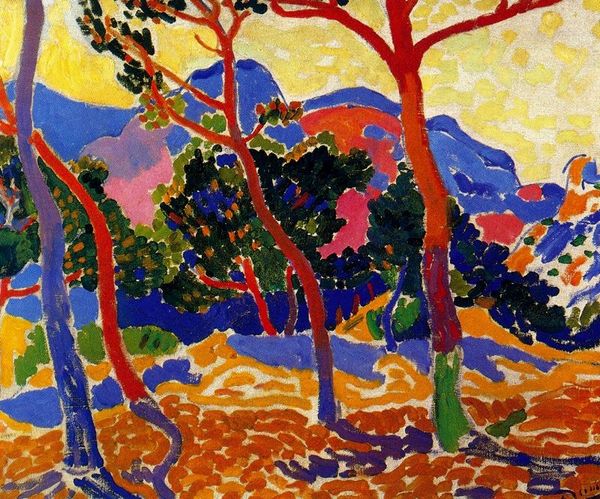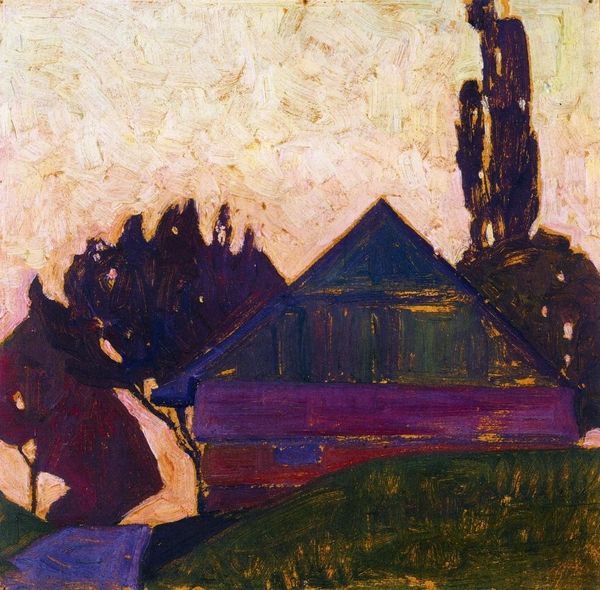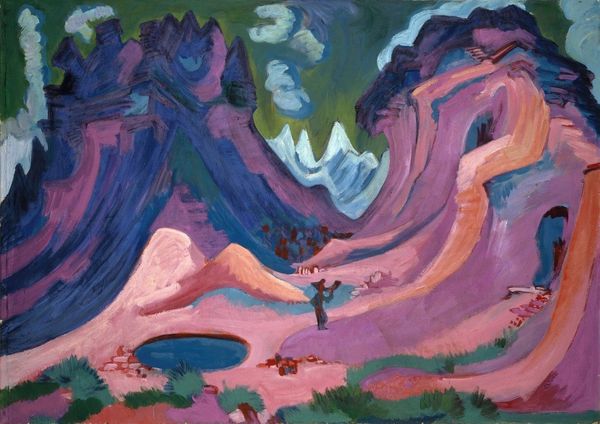
Copyright: Milton Avery,Fair Use
Editor: This is Milton Avery's "Autumn," painted in 1944. It's an acrylic on canvas, and I’m struck by how he uses such a limited palette to create a sense of depth and a quiet melancholy. How do you interpret this work? Curator: Avery presents us with archetypes: the stark, bare tree, a symbol across cultures for life, death, and resilience in the face of winter. The autumnal colors, rendered almost abstractly, evoke not just a season, but the passage of time itself, don't they? Editor: Yes, I see what you mean about time. And that vibrant purple is unexpected! Curator: The purple is intriguing. Does it evoke for you a dreamlike quality, perhaps the fading vibrancy of memory as summer transitions to fall? What psychological weight might Avery have intended with that color? Editor: I hadn't thought about it as a memory, but that makes sense. Maybe it’s his memory of autumns past. It feels so personal. Curator: Exactly! Consider how Avery flattens the perspective, almost collapsing foreground and background. It suggests a conscious turning inward, a meditation on the season rather than a straightforward depiction. Do you see that collapsing in other works from the period? Editor: Now that you point it out, I do! I never considered the symbolism of such a limited palette, or the emotional resonance of color in landscape. It’s much deeper than just a pretty scene. Curator: Precisely. Avery uses these deceptively simple forms to tap into deep-seated cultural and personal understandings of change, loss, and the enduring beauty of nature. Editor: I’ll definitely be thinking about those symbols of life and memory now when I look at other landscapes. Curator: Indeed, it gives one pause to remember that landscapes also serve as cultural records and coded portraits of inner emotional environments, too.
Comments
No comments
Be the first to comment and join the conversation on the ultimate creative platform.
